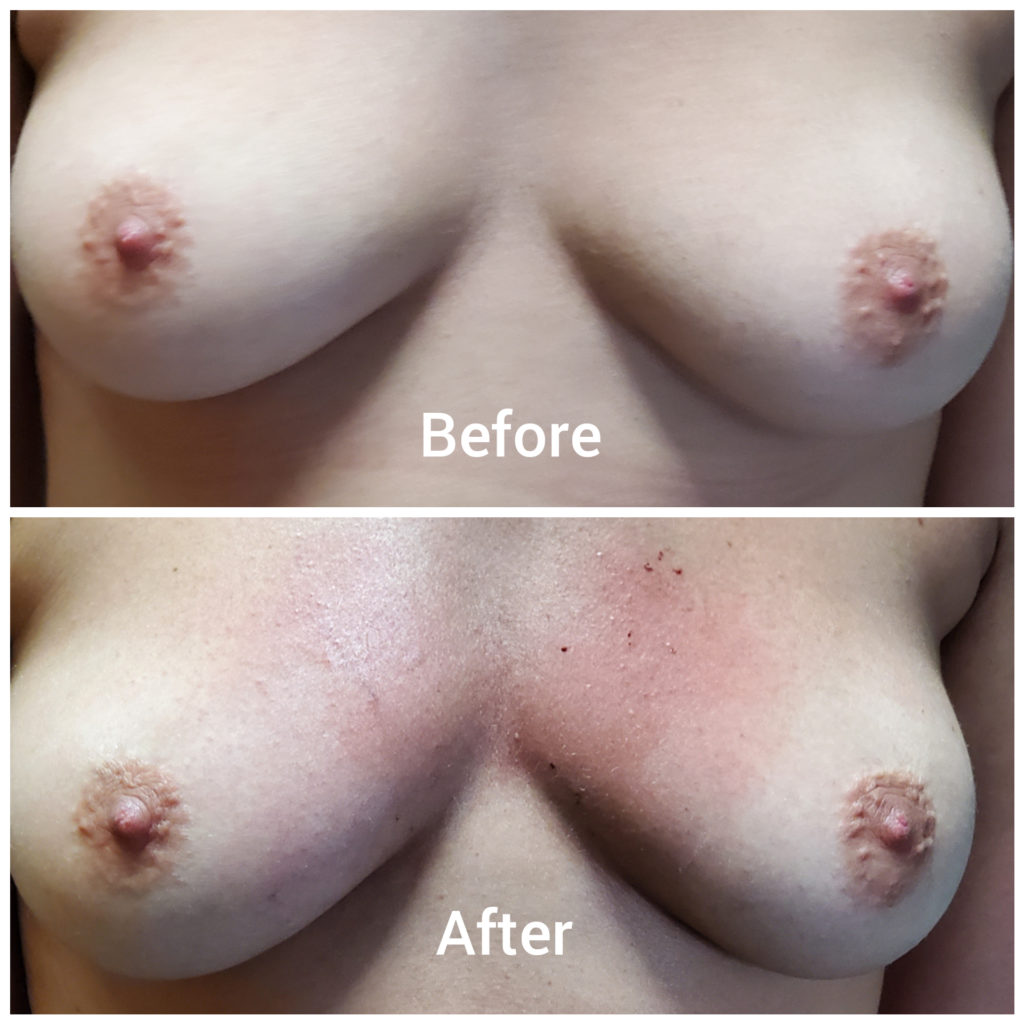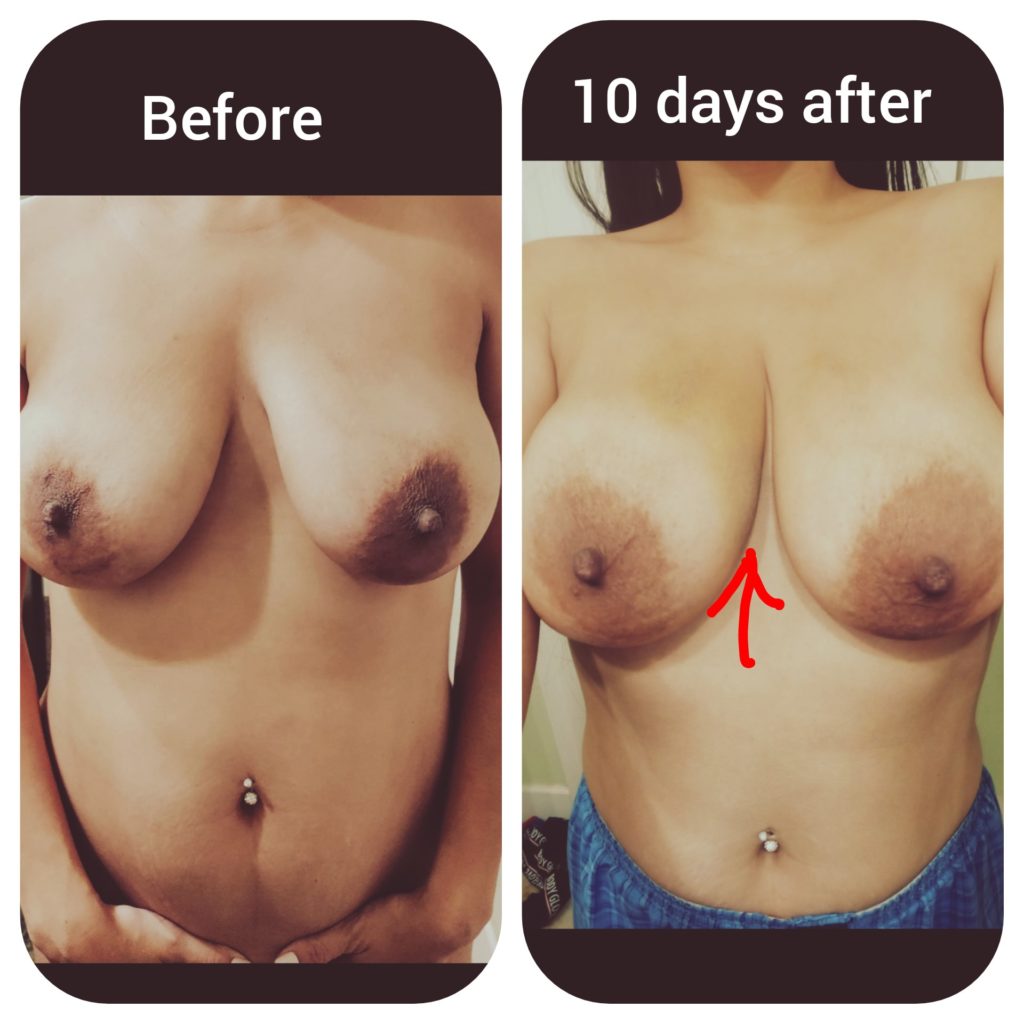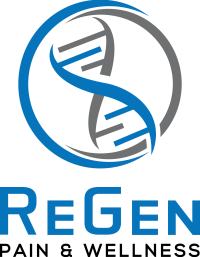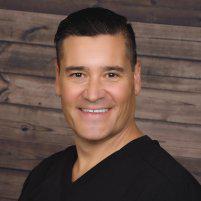Vampire Breast Lift
The PRP Breast Lift in Scottsdale
Do You Show Any of These 5 Signs of the Aging Breast?
1. Skin color becomes more gray because of less blood flow.
2. Shape of the breast becomes collapsed and droopy.
3. Sensation decreased after breast feeding, or implants, other surgery, or aging.
4. Inverted nipples.
5. Crinkling, crate-paper skin around the cleavage area.


3 Steps of the PRP Breast Lift Procedure
(1) Evaluate Shape and where the shape can be enhanced to create a younger, more attractive appearance.
(2) Preparation of the growth factors for injection...
First, the injector (1) isolates growth factors from the patient’s blood. (2) When these growth factors enter the breast (injected by the physician), then muti-potent cells become activated to grow new tissue. This new tissue includes new collagen, new fatty tissue (for smoothness), and new blood vessels (for a healthy glow).
Then she “activates” those platelets to cause the release from the platelets of at least 8 growth factors that would normally be used to heal injured tissue. These growth factors work like magic to cause increased collagen & new blood flow. To rejuvenate new skin, these growth factors must be put back into your breast.
(3) Injecting the Magic into Your Breast
Using numbing cream and a very small needle (for almost no pain), the physician injects the woman’s own growth factors back into her breast in a particular way. These growth factors then activate multipotent cells already in the skin (tricking them into “thinking” there’s been an injury and new younger tissue should generated).
How it's done (4 Steps, sometimes 5)...
-
 Surface with defect. Skin with underlying tissue of collagen, blood vessels, & nerve.
Surface with defect. Skin with underlying tissue of collagen, blood vessels, & nerve.- Hyaluronic acid filler added. The filler is optional but helps with larger defects. The surface becomes flat.
- Blood-derived growth factors prepared with FDA-approved kit and then injected into the same area. These blood-derived growth factors include platelet-rich plasma. This fluid can be prepared at the bedside in about 15 minutes and then injected into the area. The hyaluronic acid filler may sometimes be left out of the procedure (step 2) but the blood-derived growth factors should always be included and should be prepared with an FDA approved kit (not a lab kit made to measure blood components).
- Cells that rest in the bone marrow and surrounding tissue are recruited & activated by the blood-derived growth factors to migrate to the area to grow new healthier tissue (the body does this step, not the physician). In over 10,000 research papers with PRP in multiple tissue types, there has NEVER been one documented granuloma, fibrosis, necrosis, or neoplasia (cancer) from these growth factors in 1,000s of research papers. On the contrary, PRP has been used to IMPROVE blood flow, grow new nerve, fight infection, & remodel scars into normal tissue.
- The body resorbs the injected hyaluronic acid filler, if used, (which acts as a scaffolding for the recruited cells) and resorbs the platelet-rich fibrin matrix, but instead of the defect reappearing, the body fills the previous space with normal tissue (that grows from the pleuripotent cells). The new tissue looks smoother and displays a healthier color and shape. The following video demonstrates this process…
First, it’s important to know that PRP (what’s used in the PRP Breast Lift procedure) has NEVER been associated with malignancy or any serious side effect EVER (in over 10,000 research papers in multiple tissue types).
Secondly, the PRP Breast Lift methods have NEVER been associated with any serious side effects. On the other hand, BREAST IMPLANTS (not the PRP Breast Lift) have been associated with all of the following…
(1) Implants associated with increased risk of cancer (click now to read about women treated with chemo after implants), Here’s the FDA’s current investigation and recommendations about this rare but real phenomenon of cancer after implants.
(2) Implants can cause encapsulation, Here’s another research study demonstrating how the encapsulation (occurs in around 1 in 10 women who get implants) could help trigger breast cancer—>>click to read Our provider group is looking at using the PRP Breast Lift as a possible way to treat the encapsulation that occurs in around 10% of breast implant recipients before the capsule converts to cancer. Since PRP helps fight both infection and decrease the autoimmune response, biologically this makes sense. This is why some people have stretched things to say use the PRP Breast Lift procedure to help prevent cancer. We do not have nearly enough research to say that yet!
(3) Implants can cause necrosis of the nipple
(4) Implants can cause loss of sensation of the nipple
(5) Implants can cause infection,
(6) Implants can cause dehiscence,
(7) Implants can rupture.
–>>We are NOT saying that breast implants are not a good option for many women (complication rate is less than 5% or less than 1 in 20).
–>>We are saying that Implants have been associated with thousands of serious complications (including cancer)
–>>While on the other hand, the material used in the PRP Breast Lift procedure, PRP (by thousands of research papers in multiple tissue types (even when using the method to repair the breast after mastectomy for breast cancer) has NEVER been associated with one serious side effect–EVER!
For restoration of the breast, plastic surgeons commonly mix PRP with fat and transfer the mixture (fat + PRP) to the breast (widely done since 2009 to repair women post op from mastectomy for cancer). Even though there is some evidence that PRP could help prevent breast cancer, and even though PRP (what’s used in the Vampire Breast Lift®) has been shown in multiple research studies to be safe when mixed with fat and transferred to the breast (even in women after breast cancer), we have no direct studies showing that it actually helps prevent breast cancer. Doctors have used PRP to help restore breast tissue for years and that has been done without any record of serious side effect ever. And biochemically, PRP should help prevent cancer, but until those studies are done, PRP should not be used to help prevent cancer.
–>>Here’s an article by the American Society of Plastic Surgeons describing fat transfer as safe.
Here’s another research article that review the use of fat (usually mixed with PRP) for repair of the breast after breast cancer and how it’s considered safe by gynecologists (click to read).
Here’s another recent article published showing safety of fat for restoration of the breast post surgery for breast cancer (click to read). If you notice this quote from the article, there was a slight DECREASE in incidence with transfer of fat to the breast (which again would impart the effects of PRP)…
“As shown in Figure 1, the cumulative 3-year and 5-year locoregional recurrence rates were 0.3 percent and 1.6 percent, respectively, for the cases (lipofilling) and 1.3 percent and 4.1 percent, respectively , for the controls (no lipofilling) [That’s 1/2 the recurrence rate with the fat/growth factors]. The incidence of locoregional recurrence was 0.25 cases per 100 person-years for the cases and 0.65 cases per 100 person-years for the controls (p = 0.455). In the 305 healthy breasts reconstructed with lipofilling after risk-reducing mastectomy, no cases of breast cancer were observed during the follow-up period.”End Quote.
Plastic & Reconstructive Surgery:
February 2016 – Volume 137 – Issue 2 – p 385–393
doi: 10.1097/01.prs.0000475741.32563.50
Breast: Original Articles
Even though there may be biochemical reasons why PRP (the Vampire Breast Lift®) may be protective to the breast, the woman should still be followed by her surgeon and not use PRP to help prevent cancer …only to restore the breast to a more natural shape (either alone or mixed with fat).
One of the side effects of fat transfer of fat to the breast is that the fat will simply die and there will be left no improvement in appearance. To help survival of the transferred fat, the fat is usually mixed with platelet-rich plasma (PRP). For years, oral surgeons have used PRP to help with healing in reconstructing the mouth of a man undergoing oral surgery in the face of cancer of the jaw. With multiple papers, no one has demonstrated PRP as a carcinogen (which makes sense since PRP is normally in our blood and is generated as part of the normal healing process and so would ENHANCE the immune system and so in theory should help protect against cancer (though we have no proof that PRP would prevent cancer in the breast).
So, even though we have over 10,000 research papers about PRP and not one EVER showed development of neoplasia (cancer) we should use PRP only to restore tissue, not for prevention of cancer.
We consider breast implants to be a viable and accepted procedure. Yet, breast implants can cause infection, dehiscence, necrotic (dead) nipples, loss of sensation of nipples, irregularities, encapsulation, and can break leaking into the tissue…all these things happen (click to read!) This does not mean that breast implants are not a useful and “relatively safe” procedure. The procedure is done over 200,000 times per year in the US. Most of the known side effects occur in less than 5% (less than 1 in 20). But, still these are KNOWN side effects and we are putting a foreign material into a tissue that’s known to develop cancer and we know that chronic irritation or inflammation (which can occur from a foreign material in the body) can be a trigger for cancer. Still, implants are a safe option.
Yet, PRP is used to treat scaring, is known to enhance the immune system (as in fight infection and in theory fight cancer cells) –and PRP tends to DECREASE inflammation (click here to read over 250 research projects on the subject) and PRP has never been associated with a serious side effect EVER (it can even be use in pregnancy) …and PRP is being done already (injected into the breast along with fat with fat transfer to the breast) and considered considered safe for YEARs.
In short, if fat mixed with PRP is safe even in a woman trying to stay cancer free post treatment for breast cancer, then PRP alone should also be safe (we just avoid the discomfort of the liposuction needed to obtain the fat and use PRP alone in most cases of the Vampire Breast Lift® procedure).
—>>>There are no long-term 40 year double blind cross over studies with PRP, fat with PRP, or with implants. We only know what we know and that is that there has never been a neoplasia or serious side effect associated with PRP ever–and on the contrary, PRP is used frequently to enhance the healing of damaged and scarred tissue.
So, if a woman wants an increase in cleavage, or improvement of sensation of the nipple with PRP alone and to avoid surgery, then why should she more afraid of the material with a 10 year history of not one serious side effect than of a procedure with a much higher rate of complication (implants)?
We don’t think she should.
We think she should consider all three procedures to be relatively safe and undergo the procedure that’s best for her purposes: Either (1) implants (for the most volume), (2) fat transfer to the breast (mixed with PRP) for less volume, or (3) the Vampire Breast Lift® (a way of using PRP alone) for a polishing effect and for touching up the breast in the cleavage area without increasing breast size).
1.Cervelli V, Palla L, Pascali M, et al. Autologous platelet-rich plasma mixed with purified fat graft in aesthetic plastic surgery. Aesthetic Plast Surg 2009;33:716-21.
2. Cervelli V, Gentile P, Scioli MG, et al. Application of platelet-rich plasma in plastic surgery: clinical and in vitro evaluation. Tissue Eng Part C Methods 2009;15:625-34.
3.Nakamura S, Ishihara M, Takikawa M, et al. Platelet-rich plasma (PRP) promotes survival of fat-grafts in rats. Ann Plast Surg 2010;65:101-6.
4.Gentile P, Orlandi A, Scioli MG, et al. A comparative translational study: the combined use of enhanced stromal vascular fraction and platelet rich plasma improves fat grafting maintenance in breast reconstruction. Stem Cells Transl Med 2012;1:341-51.
5.Choi J, Minn KW, Chang H. The Efficacy and safety of platelet-rich plasma and adipose-derived stem cells: An update. Arch Plast Surg 2012;39:585-92.
6. Sommeling CE, Heyneman A, Hoeksema H, et al. The use of platelet rich plasma in plastic surgery: a systematic review. J Plast Reconstr Aesthet Surg 2013;66:301-11.
- Anthony P. Sclafani, MD; Steven A. McCormick, MD. Induction of Dermal Collagenesis, Angiogenesis, and Adipogenesis in Human Skin by Injection of Platelet-Rich Fibrin Matrix. Arch Facial Plast Surg. Published online October 17, 2011. [Biopsy-proven new blood vessel growth and new collegen using platelet-derived growth factors (using a single-spin centrifuge)]
- Cervelli, Valerio MD; Lucarini, Lucilla MD.Use of Platelet-Rich Plasma and Hyaluronic Acid in the Loss of Substance with Bone Exposure. Advances in Skin & Wound Care: April 2011 – Volume 24 – Issue 4 – pp 176-181
- Cervelli V1, Lucarini L, Spallone D, Brinci L, de Angelis B. Use of platelet rich plasma and hyaluronic acid on exposed tendons of the foot and ankle. J Wound Care. 2010 May;19(5):186, 188-90.
- Ramos-Torrecillas J1, García-Martínez O1, De Luna-Bertos E1, Ocaña-Peinado FM2, Ruiz C3. Effectiveness of platelet-rich plasma and hyaluronic acid for the treatment and care of pressure ulcers. Biol Res Nurs. 2015 Mar;17(2):152-8. doi: 10.1177/1099800414535840. Epub 2014 May 20.
- Hom DB, Linzie BM, Huang TC. The healing effects of autologous platelet gel on acute human skin wounds. Arch Facial Plast Surg. 2007;9(3):174-183.
- Sclafani AP, Romo TR III, Ukrainsky G, et al. Modulation of wound response and soft tissue ingrowth in synthetic and allogeneic implants with platelet concentrate. Arch Facial Plast Surg. 2005;7(3):163-169.
- O’Connell SM, Impeduglia T, Hessler K, Wang XJ, Carroll RJ, Dardik H. Autologous platelet-rich fibrin matrix as cell therapy in the healing of chronic lowerextremity ulcers. Wound Repair Regen. 2008;16(6):749-756.


